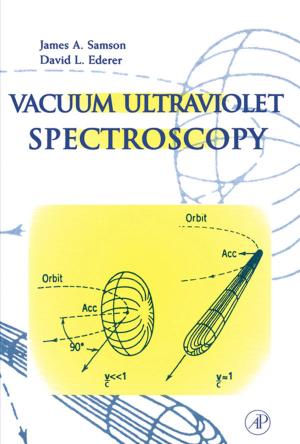Role of Materials Science in Food Bioengineering
Nonfiction, Science & Nature, Technology, Food Industry & Science| Author: | ISBN: | 9780128115008 | |
| Publisher: | Elsevier Science | Publication: | March 29, 2018 |
| Imprint: | Academic Press | Language: | English |
| Author: | |
| ISBN: | 9780128115008 |
| Publisher: | Elsevier Science |
| Publication: | March 29, 2018 |
| Imprint: | Academic Press |
| Language: | English |
The Role of Materials Science in Food Bioengineering, Volume 19 in the Handbook of Food Bioengineering, presents an up-to-date review of the most recent advances in materials science, further demonstrating its broad applications in the food industry and bioengineering. Many types of materials are described, with their impact in food design discussed. The book provides insights into a range of new possibilities for the use of materials and new technologies in the field of food bioengineering. This is an essential reference on bioengineering that is not only ideal for researchers, scientists and food manufacturers, but also for students and educators.
- Discusses the role of material science in the discovery and design of new food materials
- Reviews the medical and socioeconomic impact of recently developed materials in food bioengineering
- Includes encapsulation, coacervation techniques, emulsion techniques and more
- Identifies applications of new materials for food safety, food packaging and consumption
- Explores bioactive compounds, polyphenols, food hydrocolloids, nanostructures and other materials in food bioengineering
The Role of Materials Science in Food Bioengineering, Volume 19 in the Handbook of Food Bioengineering, presents an up-to-date review of the most recent advances in materials science, further demonstrating its broad applications in the food industry and bioengineering. Many types of materials are described, with their impact in food design discussed. The book provides insights into a range of new possibilities for the use of materials and new technologies in the field of food bioengineering. This is an essential reference on bioengineering that is not only ideal for researchers, scientists and food manufacturers, but also for students and educators.
- Discusses the role of material science in the discovery and design of new food materials
- Reviews the medical and socioeconomic impact of recently developed materials in food bioengineering
- Includes encapsulation, coacervation techniques, emulsion techniques and more
- Identifies applications of new materials for food safety, food packaging and consumption
- Explores bioactive compounds, polyphenols, food hydrocolloids, nanostructures and other materials in food bioengineering















